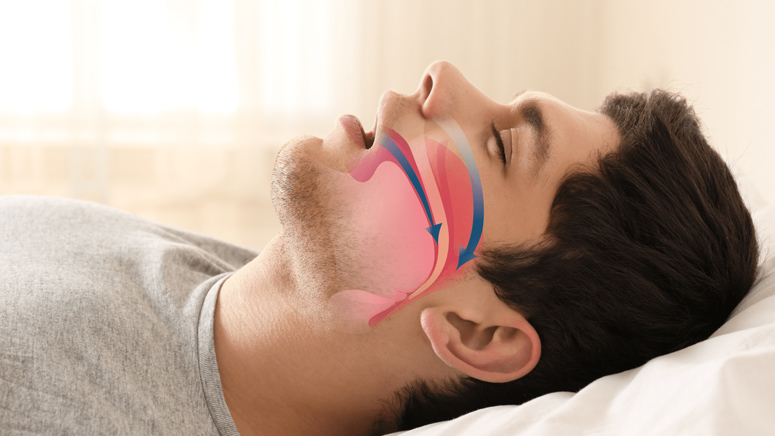Obstructive Sleep Apnea

Sleep apnea is a condition that occurs when you lose your breathing while sleeping. It is one of the most common causes of oversleeping during the day.
Sleep apnea can be grouped into two:
- Obstructive sleep apnea (OSA): You experience this type of sleep apnea when the soft tissues behind your throat shift from its natural position to block the passage of air.
- Central sleep apnea (CSA): You experience this type of sleep apnea when your brain loses its ability to trigger your respiratory muscles to breathe.
In some cases, you may have both obstructive sleep apnea and central sleep apnea (mixed sleep apnea). The disorder occurs in episodes, and you can experience it many times in a night. After a while, your sleep cycle gets disrupted.
If you have sleep apnea, you may experience symptoms, such as gasping for air while sleeping and loud snoring. When you have an episode of the disorder, your body lacks oxygen for a certain period. This results in other medical conditions such as an unstable heartbeat. After a while, you may experience severe health issues, which include heart disease [2] and high blood pressure [3]
Sleep apnea is common in overweight people. You have to first lose weight to treat the disorder.
How to Treat Sleep Apnea
Your doctor will recommend any of these two treatment methods for apnea;
- Positive airway pressure devices: You have to wear the device on your face. It consists of a machine that binds to a mask. The machine sends pressurized air into your throat while you’re asleep. The air stops the throat from collapsing.
- Oral appliances: They function like orthodontic or mouthguard devices. The devices are used to hold the lower jaw forward slightly during sleep. The position of the jaw stops the blockage of airways by soft tissues.













